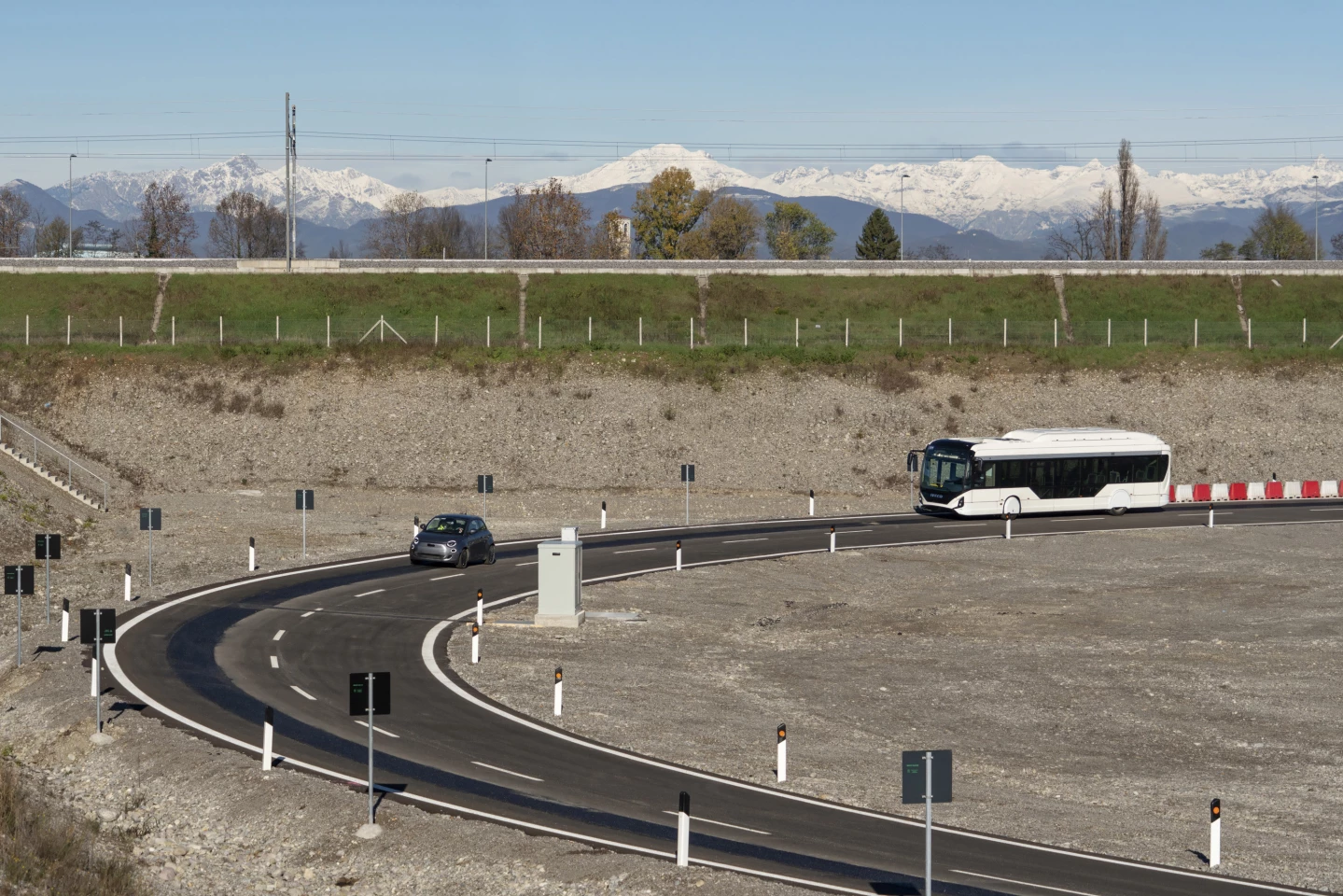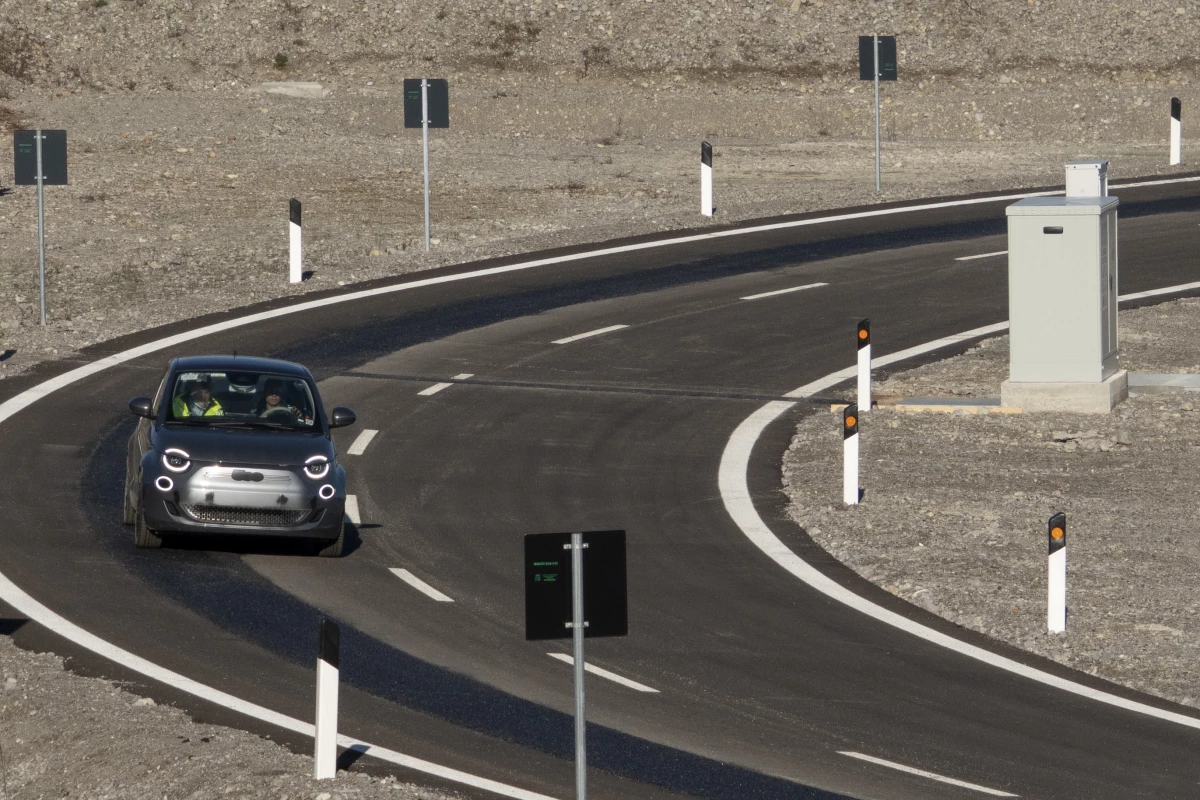The world's fifth-largest automaker has built and tested a charge-as-you-drive system – a loop of road in Italy with wireless EV charging coils embedded under the surface, so that electric cars can charge as they drive and unlock unlimited range.
Stellantis, parent company of Fiat, Chrysler, Dodge, Chrysler, Jeep, Opel, Peugeot, Ram, Maserati and many others, is a founding member of the Arena Del Futuro project in Chiari, a 1,050-meter (0.65-mile) loop of road near the Chiari exit of the A35 Motorway, about half an hour outside Milan in northern Italy. This "Arena of the Future" was built to test a number of forward-looking transport technologies, including advanced 5G connectivity and IoT ideas, V2X communications and road surface optimizations.
But its primary goal was to test and prove the capabilities of wireless on-road charging systems like Stellantis's Dynamic Wireless Power Transfer (DWTP) technology. To install the DWTP, some small grooves need to be cut into the road surface, so that a series of flattish inductive charging coils can be laid down and connected to a power supply. Then, asphalt is poured back over the top.

When active, the coils send power to vehicles passing overhead, provided that they've been fitted with a receiver. Interestingly, at this stage it appears the energy is sent straight to the car's electric motor. So rather than charging up the battery, the DWTP system simply takes over supplying energy, so that EVs above can cruise along at highway speeds without burning any battery.
Initial tests are complete, and Stellantis says the power transfer efficiency is "comparable to the typical efficiency of fast charging stations." The magnetic fields involved, says the company, have "no impact on the driver and passengers," and are safe for pedestrians to walk through. Running on DC means the DWTP can use relatively thin, compact cabling, and it can also be directly and efficiently connected to renewable energy sources without the need to convert back and forth from AC.
So it can be done, and it works. But there's no word on whether, or when, the DWTP system will be rolled out on public roadways. Getting a project like this off the ground at commercial scale poses a series of chicken-and-egg problems, and may well end up costing more than it can bring back in revenue. These things will only make sense if they're rolled out on very long stretches of high-traffic highway, if drivers can be accurately billed for their use, and if enough people buy compatible cars to make them worthwhile.

So positive test results aside, it seems we're still several expensive leaps of faith away from seeing in-road charging become commonplace. Stellantis says the technology "attracts interest for commercial development globally," since it can also be built into static EV charge stations, parking lots, airports and the like, but there's nothing concrete announced as yet.
Check out a video below, which shows how they lay this stuff down.
Source: Stellantis







